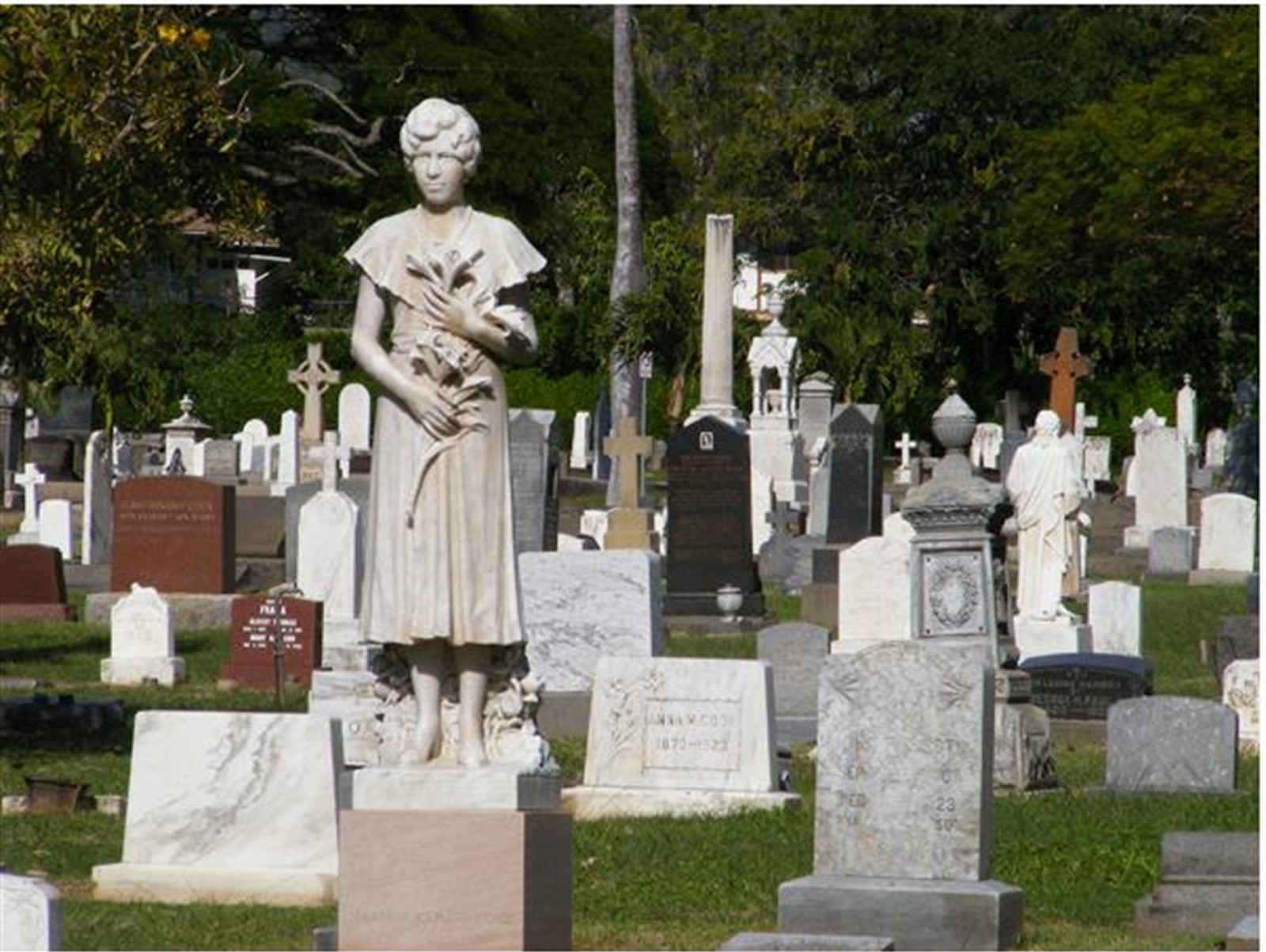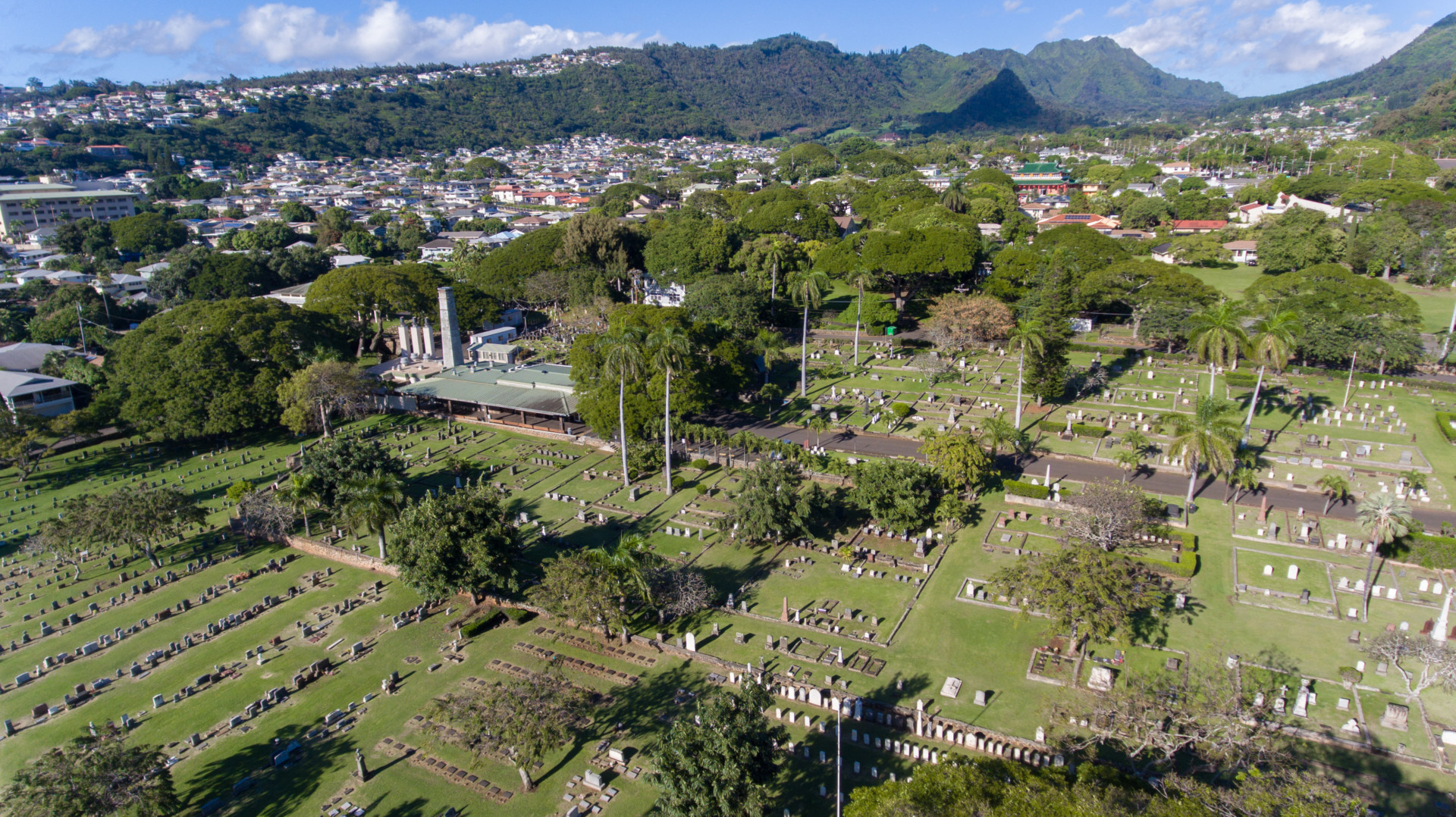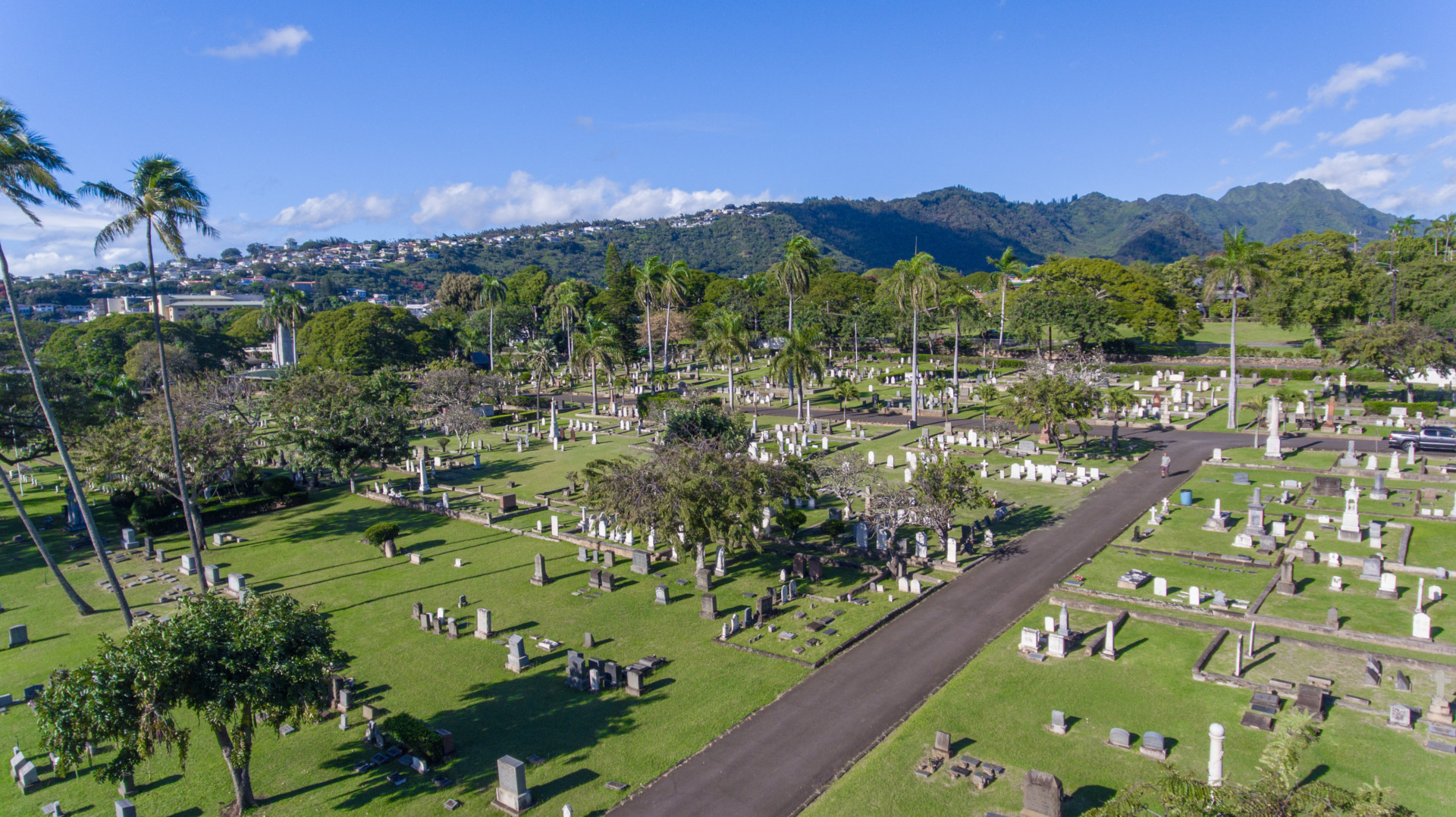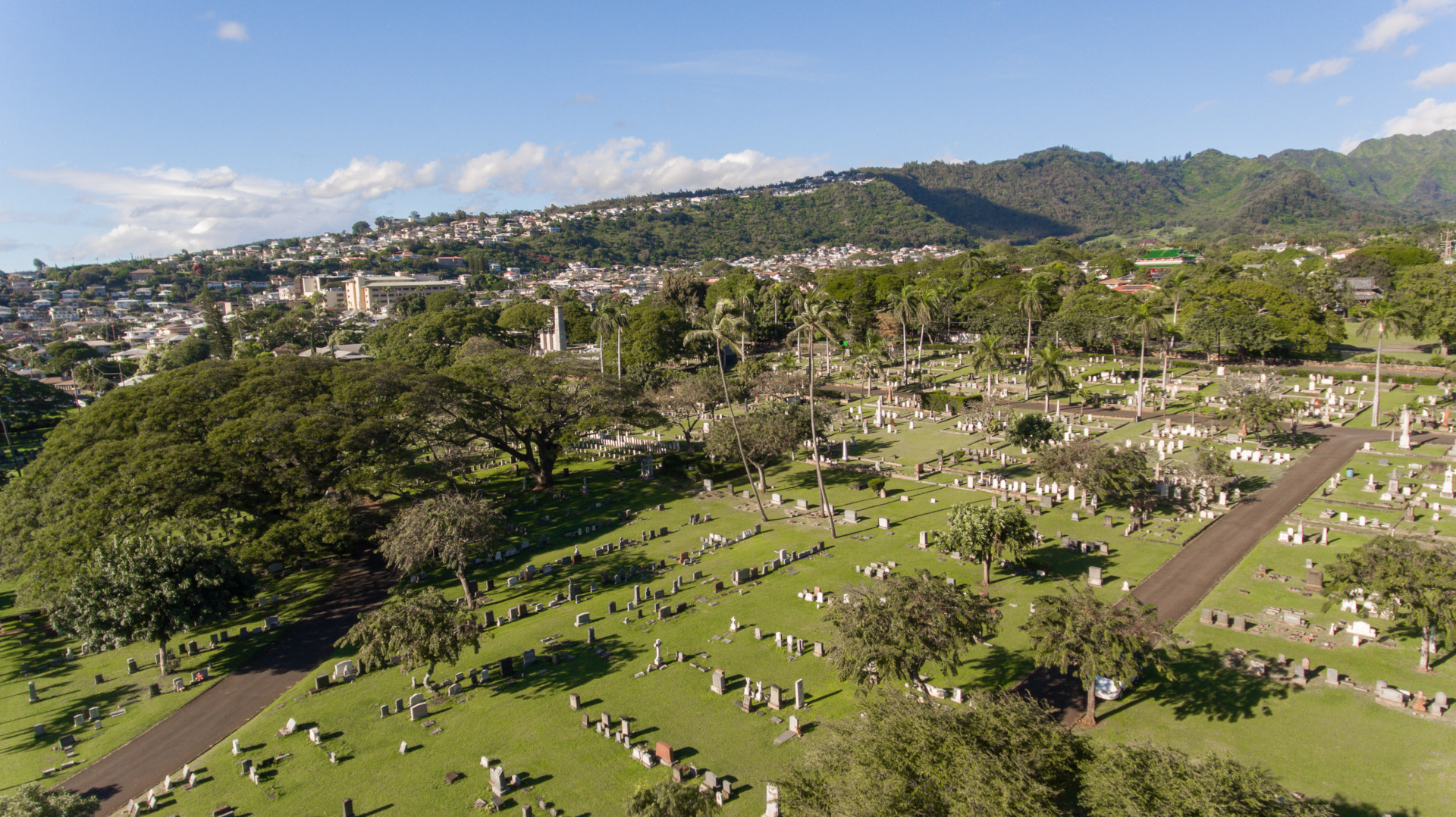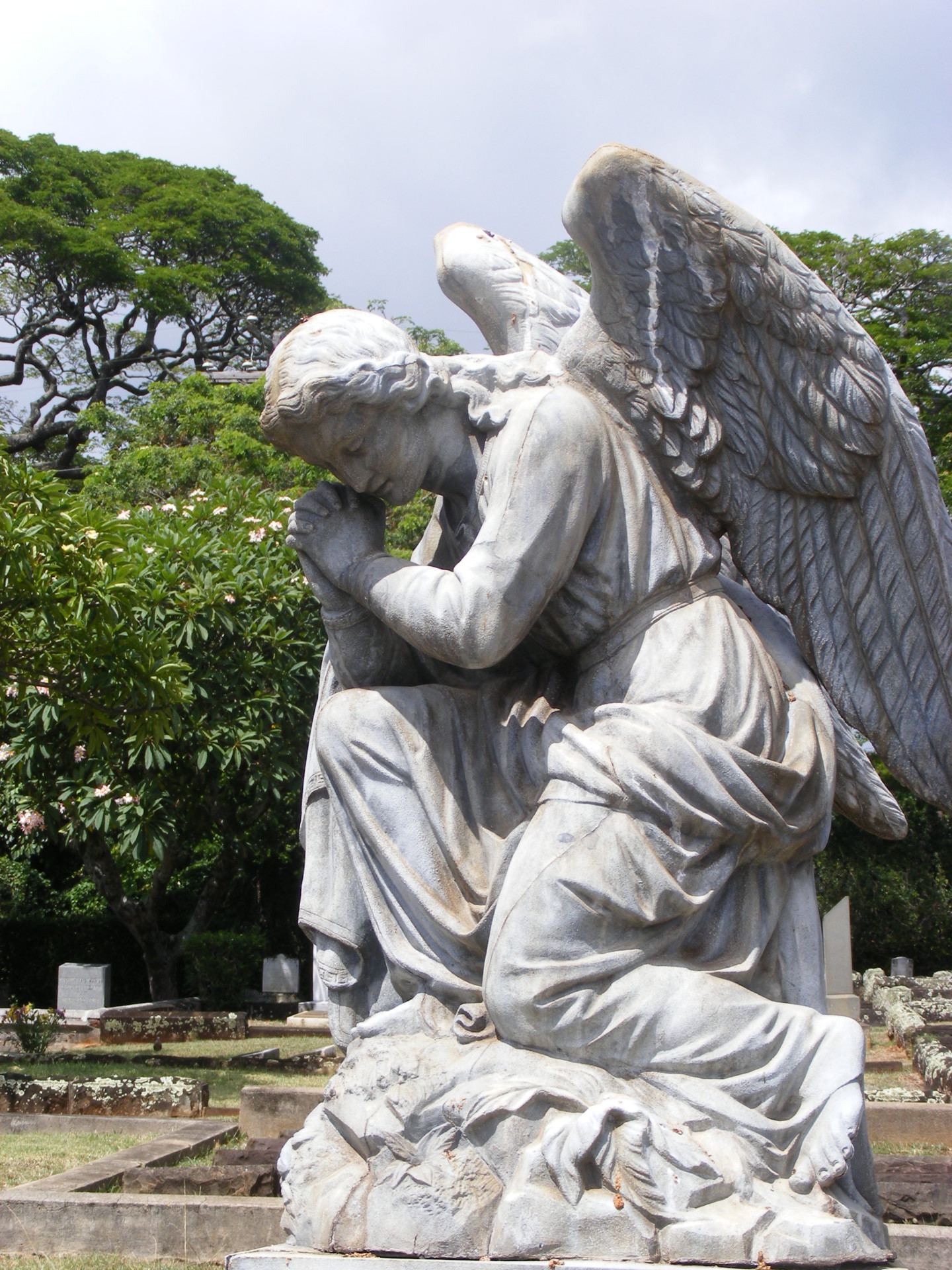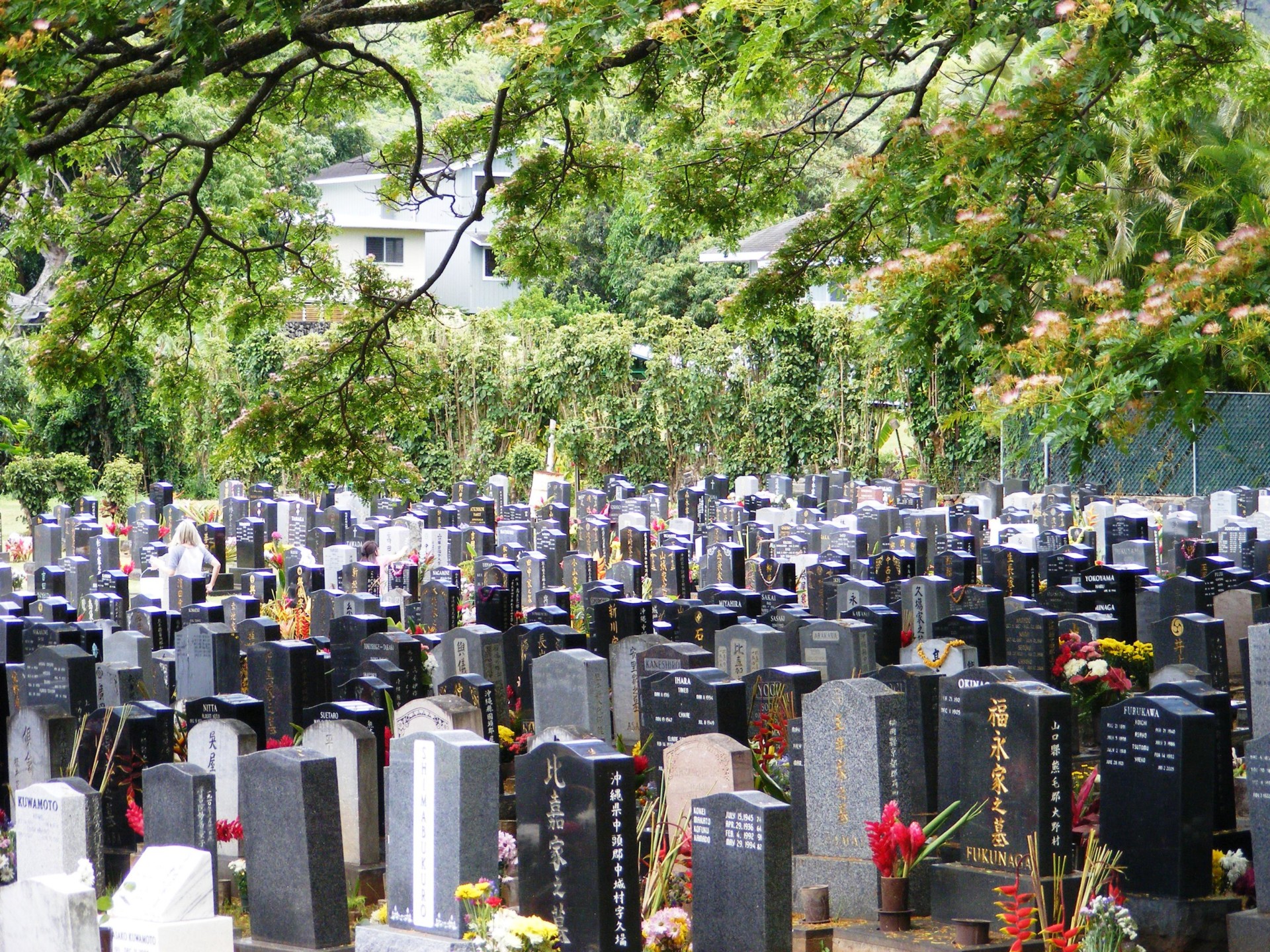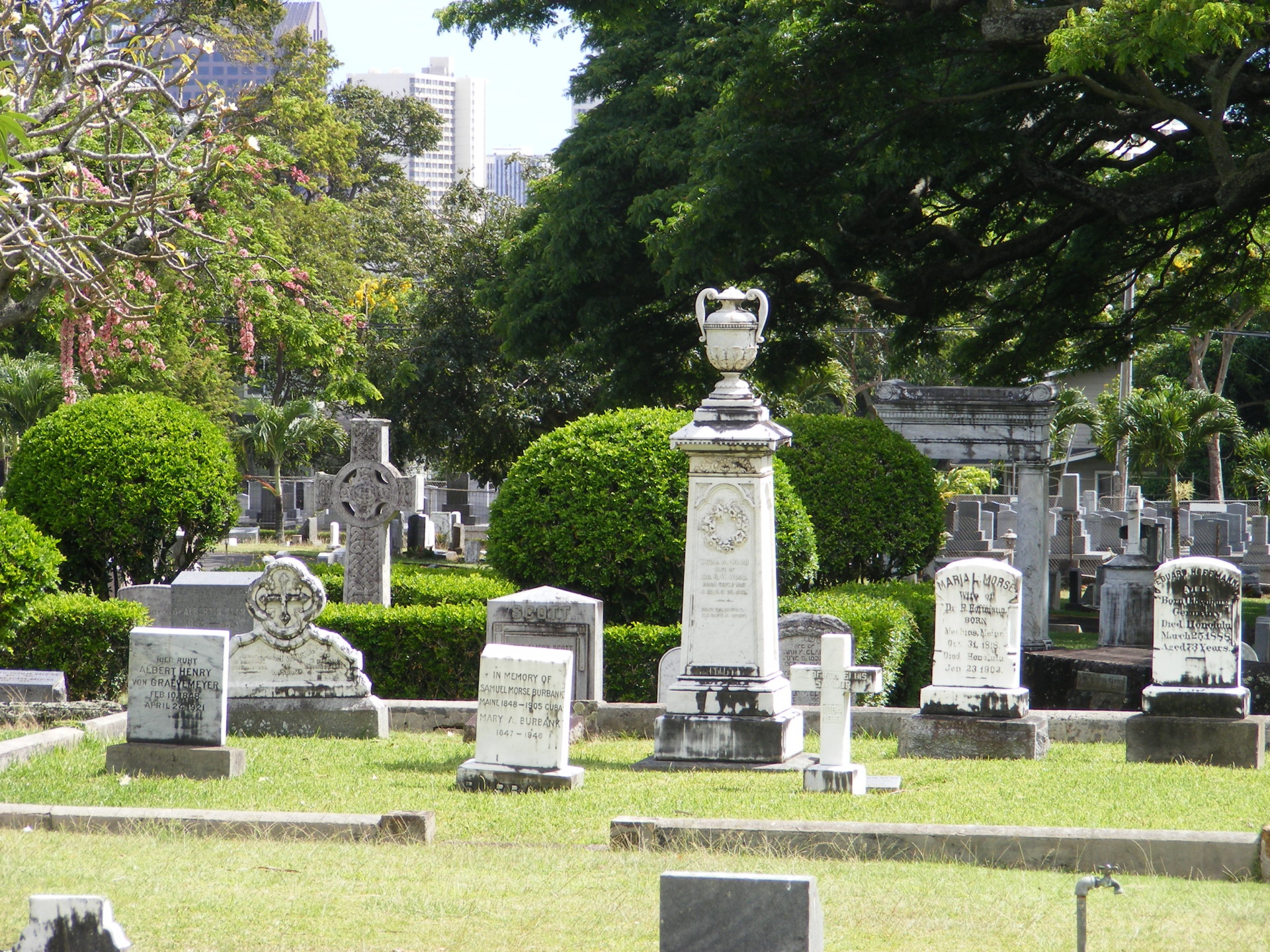Oʻahu Cemetery Burial Ground and Historic Site
By Nanette Napoleon
Along the busy thoroughfare which is upper Nuʻuanu Avenue in Honolulu, sits an 18-acre parcel of land adorned with large beautiful heritage trees and an array of thousands of lovely upright tombstones; each having a unique personal story to tell. This place has the distinction of being an important historical site, inspiring outdoor museum, and beautifully landscaped Garden of the Dead, providing valuable park-like open space to a densely populated neighborhood.
Historically, Oʻahu Cemetery—founded in 1844—is significant as Hawaiʻiʻs first public graveyard. There are hundreds of notable permanent residents resting peacefully. Several notable ones include: Alexander Joy Cartwright, Jr. (1820-1892), the so-called “Father of American Baseball”; John Papa Iʻi (1800-1870), one of the most influential political leaders of his day; Benjamin Franklin Dillingham (1844-1820), railroad and land baron; Ululani Jabulka (1895-1970, international opera star; Henry Bond Restarick (1854-1933), first American Bishop of the Anglican Church in Hawaiʻi; Bina Mossman (1893-1990), Hawaiian musician and political leader; Dr. George Straub (1879-1966), pioneer group practice physician; Cherilla Lowrey (1861-1918), founder of the Outdoor Circle; Julie Swanzy (1860-1941), champion of public parks and children’s causes; Rev. Paul Osumi (1905-1996), author of newspaper column “Today’s Thoughts”; and Julia H. Afong (1840-1919), matriarch of the illustrious Ah Fong clan; to name a few.
The most poignant gravesite at Oʻahu Cemetery is that of George Gill Jamieson (1918-1928) who was kidnapped and murdered in 1928. The kidnapping of this young boy triggered an island-wide manhunt for the kidnapper and Jamieson. After days of intense searching and community despair, little Gill was found dead in a dense grove of trees in Waikiki. The entire territory of Hawaiʻi went into mourning. Soon after 20-year-old Miles Fukunaga was captured, sent to trial and hung by the neck until dead.
Viewed from an artistic and symbolic point of view, O’ahu Cemetery has, by far, the best collection of markers including death images, symbols and motifs as is typical of a proper Victorian cemetery. The grounds are home to ornate angels and cherubs, Celtic crosses, urns (draped and undraped), weeping willows, iron fences, obelisks, bronze and marble relief panels creating a stunning array of aesthetic delights.
Individual porcelain portraits representing people of all ages, ethnicities and nationalities, gaze out into the world, connecting viewers to those laid to rest in a powerful and poignant way.
August 14, 2019 marks the 175th Anniversary of this iconic Hawaiʻi cemetery. It is one of the few business ventures established in the islands that has reached 175 years of continual operations. Click here to learn more about the Oʻahu Cemetery.
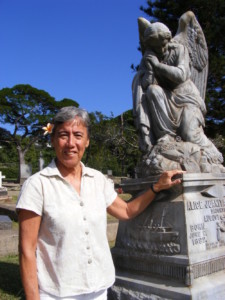
Nanette Napoleon has been a trustee of Oʻahu Cemetery for more than 20 years, and is the author of the book “Oʻahu Cemetery Burial Ground & Historic Site.” She is also recognized as the state’s leading expert on historic graveyards. She is the author of O‘ahu Cemetery: Burial Ground & Historic Site.


